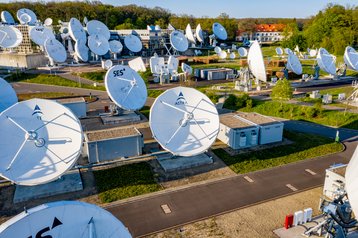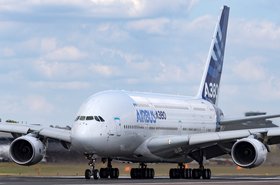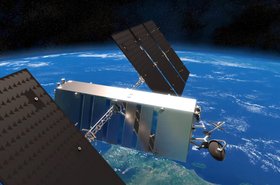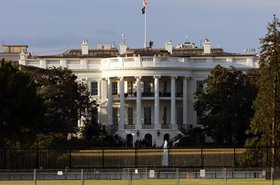The Federal Communications Commission (FCC) is exploring clearing more C-band spectrum for auction, potentially paving the way for another large payout to satellite operators.
The US communications regulator issued a Notice of Inquiry on February 27 to explore “opportunities for innovation” in the mid-band spectrum range known as the Upper C-band (3.98-4.2GHz) in order to meet projected spectrum demand, spur economic growth, and advance American security interests.
In 2020, the FCC made headlines for auctioning the lower portion of the C-band (280 megahertz between 3.7-3.98GHz,) for flexible wireless use, to Verizon, AT&T, T-Mobile, and other terrestrial 5G providers, generating $80 billion for the government.
Around $13.4 billion of those proceeds were allocated to existing spectrum holders including SES, Intelsat, Eutelsat, and Telesat, as a means of encouraging them to relocate quickly into the remaining 200MHz of C-band.
SES acquired Intelsat for $3.1 billion last year, creating a stronger multi-orbit operator. Once merged, the combined entity would control more than 90 percent of the upper C-band under discussion.
The FCC is seeking detailed proposals from stakeholders on the mechanics and structure of a transition to a more intensive use of the upper C-band that would “incentivize rapid and efficient deployment of new communications services.”
History repeating?
SES CEO Adel Al-Saleh suggested on a recent earnings call that the 2020 transactions may not be a blueprint for what will happen with the upper C-band.
“Today’s spectrum is much more valuable and has grown in the past two years,” he said, going on to suggest it was possible to free up more than 100MHz of C-band, which would not damage SES or Intelsat’s operations. “You can see the direct-to-device folks would like to get their hands on it,” he said, a key market for the burgeoning connected cars sector.
SES received $406 million in FCC reimbursement just this year with another $90 million to come in the first quarter of 2025. An auction agreed for 100MHz of spectrum would amount to billions in additional revenue for the company.
In 2023, SES hit its relocation deadlines to receive accelerated relocation payments totaling $2.99 billion, as did Intelsat, seeing $3.67 billion.
Bureaucratic complications
In 2023, the FCC’s authority to conduct spectrum auctions lapsed as senators sought to study the Pentagon’s connectivity needs better before agreeing to more spectrum reallocation. The regulator has been requesting Congress to restore the authority since.
“It is important that Congress restore the FCC’s authorization so that we can move forward in a balanced manner—one that protects the interests of all stakeholders,” FCC Chairman Brendan Carr announced. “Including our national security partners and private sector. The Upper C-band is a good place to start, and the FCC’s inquiry here can complement ongoing efforts that are focused on different portions of the Table of Frequency Allocations.”
FCC Democrat Geoffrey Starks took a more cynical tone: “There are significant challenges to more efficiently utilizing this band. Inter-agency conflict, competing business models, and bureaucracy all lend themselves to sluggish timelines and inaction.”
In January, SpaceX’s VP of satellite policy David Goldman sent an open letter to FCC Secretary Marlene Dortch suggesting shared access to the band under consideration which included satellite providers
“To be clear, SpaceX does not oppose the merger between SES and Intelsat, nor is it suggesting they have spectrum taken away,” he wrote. “Rather, SpaceX is proposing the Commission modernize the 200MHz of the upper C-band … by sharing the band across multiple operators in addition to the merged entity that already controls more than 90 percent of the band.”
“It’s really up to the FCC to decide how they want to allocate that spectrum,” said SES’ Al-Saleh. “Knowing that their main objective is to drive incremental revenue to the treasury to fund a lot of the initiatives that the Trump administration is driving.”







